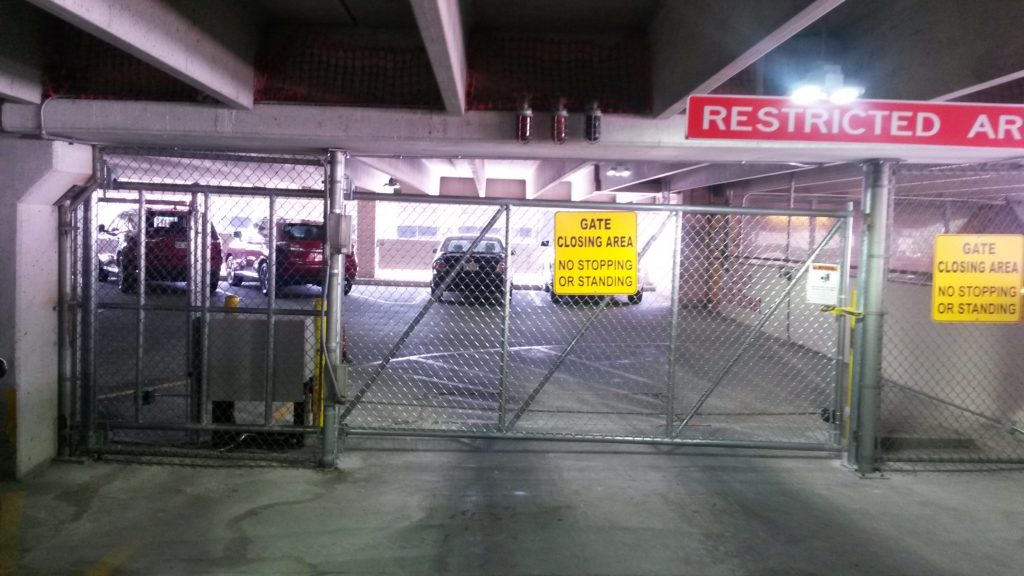9 Facilities That Need Indoor Fencing
Throughout history, fences have been typically construed as permanent outdoor fixtures—barriers that safeguard perimeters, mark boundaries, and prevent occupants from leaving the yard. While this is often true, there exist situations—many of them common—wherein indoor fencing benefits property owners. The potential advantages come in many forms: defined storage space, divided areas that don’t interfere with diffusion of light or airflow, containment of children and animals, etc. In this article, American Fence Company goes over eight such facilities/industries that benefit from indoor fences.
1. WAREHOUSES
When it comes to warehouse storage, wherein staff deals with literally thousands of items stocked floor-to-ceiling, property owners can reduce headaches by arranging itineraries into related groups and surrounding them with fences; doing so not only makes inventory simpler but allows staff to ship products in a timelier fashion. (When a customer orders Product X in Category Y, the team knows exactly where to find it!) When managing a warehouse, staff also contend with chemicals that must be kept separate from sales items, not to mention personnel files. Having interior fencing with gates helps secure these items until they’re needed.
2. STORAGE CENTERS
Like warehouses, storage centers need to categorize itineraries—in this case, according to which customer owns what. Losing an item due to accidentally tossing it into another client’s pile means liability! Once again, having partitions in the form of indoor fencing makes it easier to keep clients’ property separate—and ensure everyone gets back what they own. Indoor fencing also amps up security and gives clients reassurance their property will remain safe.
3. FACTORIES
The benefit of interior fencing in factories is twofold. In addition to everything mentioned above—successfully separating products for easy access and rollout—fencing simplifies your means of separating different kinds of equipment. For example, property managers can now separate safety items (goggles, vests, gloves, etc.) and toolboxes from equipment such as forklifts. After all, you don’t want a forklift’s path of travel blocked because someone moved a pile of toolboxes.
4. ANIMAL CENTERS
Among the most common facilities improved by indoor fencing, kennels need partitions to separate interior space according to purpose and activity. Areas where pets board and sleep, for instance, shouldn’t share space with play areas. Fences likewise separate interacting animals from those who need private space; after all, some animals are antisocial and simply need boarding until their owners return from vacation. Fencing’s benefits also include creating designated pathways for pets and staff. When it comes to kennels, interior barriers are not only helpful but essential to productivity.
5. TEMPORARY INMATE CONTAINMENT
On occasion, it becomes necessary for law enforcement to utilize interior fencing outside their correctional facilities (e.g., during civil unrest). Interior fencing can be set up inside large structures to contain, divide, and process inmates as needed.
6. APARTMENT BUILDINGS
Residential complexes with indoor storage need to secure items while also organizing them in a logical manner. One of the great things about fencing—especially chain link fencing—is the permission of light and airflow. Whereas partitions are great for security, their impervious build disrupts visibility, cuts off diffusion of light, and interrupts air movement. Prolonged, this can result in the development of mold and mildew—on the partitions as well as the items in storage—resulting in a health hazard. Regardless of whether you’re storing residents’ property or maintenance items, you don’t want staff and users touching items covered with hazardous substances. But with interior fencing, you simultaneously achieve security and permit continued movement and visibility.
7. RESTAURANTS
The need for dry storage has expanded significantly since covid-19. According to a 2020 article by Lisa White on Food Service Equipment & Supplies, “These spaces have become the headquarters for what are now essentials in foodservice operations — takeout containers, plastic servingware, napkins and bags. As restaurant dining rooms begin opening up and given the growth in off-premises sales, well-designed, organized and appropriately sized dry storage areas will play a key role in back-of-the-house efficiencies.” Indoor fencing allows you to separate items so they can be easily located and accessed.
8. GYMNASIUMS
Sports equipment is often a pricy investment for schools, rec centers, and gymnasiums. Helmets, pads, bats, etc.—ordered for dozens of participants, they add up in the long run. For this reason, enclosing everything with a sturdy interior fence—to prevent theft of these expensive items—is another worthwhile investment. When storing gym equipment, you’re also storing hygienic items such as soap, detergent, body wash, towels, first aid kits, etc. Keeping these items in a contained space permitting air and light is likewise essential.
9. PARKING GARAGES
Parking garage security includes more than entry/exit barrier arms. There will always be parts of the garage limited to authorized personnel. These areas are off limits and must be safeguarded with fencing and gates.

